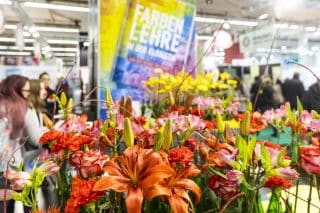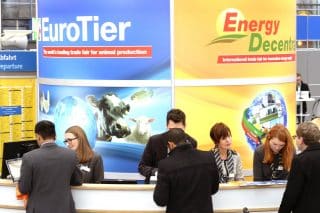The Agri Food Innovation Event, hosted at the end of June at Brightlands Campus in Venlo, The Netherlands, provided a unique platform for experts to speak at the Vertical Farming Conference. For those who weren’t able to make the event, here’s brief recap of what you missed.
Co-founder of Agritecture Consulting (USA) Henry Gordon Smith spoke about the importance of a strategic plan to grow food in cities. While there are plenty of people interested in starting urban farms, he said, information and the means to do so are not readily available. To start a vertical farm, said Smith, you need to ask smart questions, do market research, look closely at design and engineering and conduct a strong economic analysis.
“We created the first urban agriculture consulting firm that’s technology agnostic,” he said.
We’re interdisciplinary, so we have designers, engineers, horticulturalists, sustainability managers—and we approach work from that perspective.
Agritecture Consulting does everything from concept development to feasibility studies to education and workshops.

Agri Food Innovation Event 2018. Photo by Melanie Epp.
In the afternoon, Martin Veenstra, sales engineer at Certhon, shared what he felt were the key factors that determine the success and return on investment of a vertical farming project. Along with production costs, potential business owners should consider the type of crop they want to grow and what type of climate is best suited to that crop. Veenstra explained further:
When you really want to do commercial production, keep in mind that you are going to be a produce grower and that technology should serve that process and not the other way around.
It’s important to be flexible with regards to crop type when designing the farm, too, he said, in case circumstances make shifting to another crop necessary. Climate, hygiene and local markets viability are also important considerations. Finally, Veenstra pointed to the potential challenges around production efficiency and labor, and offering automation as a potential solution.

“Climate, hygiene and local markets viability are also important considerations.”
Plants and not just growers also need to adapt to new these new urban growing solutions. Monsanto’s Solanaceous Breeding Lead VK Kishore spoke on the need for new genetics designed specifically for production in vertical farms. The five traits of interest for vertical farming production include: easy and uniform fruiting; rapid biomass and multi-harvest capable; photo-induced quality; auto-harvest friendly traits; and dwarf plants with yield efficiency.
The five traits of interest for vertical farming production.
New techniques were also showcased during the course of the conference. Mark Korzilius, founder of Farmers Cut in Germany, for instance, explained the advantages of a new production method called “dryponics”. Dryponics, he explained, uses a proprietary growth substrate that keeps plant roots dry. The roots, which stay on top of the substrate, absorb the nutrients in the water.

Courtesy of Signify (previously Philips)
Celine Nicole, senior plant research specialist at Signify (previously Philips), talked about the potential of using LED light recipes to manipulate everything from yield to color and nutrient accumulation to shelf life.
The conference made one thing clear: vertical farming offers huge potential. Vertical farming, said Lambert van Horen, horticulture analyst at RaboResearch Food & Agribusiness, provides opportunities for research and development, breeders and seed propagation. However, he does not believe that plant factories are certainly not the solution for feeding the world’s increasing population.
![[AgriFood Innovation] Vertical Farming Ideas Take Root at Dutch Conference](/wp-content/uploads/sites/11/2018/07/AeroFarms-Ikea-David-Chang-40-million-investment-banner-1250x434.jpg)



![Image [Innov-Agri] Exhibiting New Products, a Farmer’s Delight](/wp-content/uploads/sites/11/2018/09/55632af4b2a708a180d8c337547173821-320x213.jpg)
![Image [Agritechnica Asia] Smart Aircrafts & Indoor Plant Growing and the Asian Market](/wp-content/uploads/sites/11/2018/09/maxresdefault1-1-320x213.jpg)
